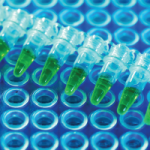Investigators have described 15 new psoriasis susceptibility loci. The loci highlight the importance of the skin in both acquired and innate host defense and identify the innate immune response as a key factor in psoriasis. Lam C. Tsoi, PhD, of the University of Michigan in Ann Arbor, and colleagues published the results of their study in Nature Genetics.1
James T. Elder, MD, PhD, of the University of Michigan, was one of the collaborators of the study. He spoke with The Rheumatologist and explained that, “We are working out the fundamental pathways of psoriasis.” In doing so, he and his coauthors found that many of the psoriasis susceptibility loci encode proteins in the TNF, IL-23, and IL-17 signaling pathways. He explained that these results are reassuring, because they underscore a match between what we are learning about the genetics of psoriasis and what we already know about the immunology of the disease. The results also reinforce what is already understood about the successful treatment of psoriasis.
Many of the loci are familiar from studies of other inflammatory diseases. Ten of the psoriasis susceptibility loci identified in this study overlap with those reported for Crohn’s disease, and ten others are associated with celiac disease.
As the multiple loci suggest, psoriasis is a complex genetic disorder and multiple genes exert a small effect on disease. Scientists can currently only account for about 22% of the inheritability of psoriasis, according to Dr. Elder. This is why a perfect genetic test is still not available. For now, the investigators are trying to nail down whether or not a particular genetic variation is important in disease. “We certainly hope that we’ll find more attackable pathways from the genetic work that we’re doing,” elaborated Dr. Elder.
Some of the newly identified loci (RUNX3, TAGAP, and STAT3) regulate T cell function. Other genes encode for interferon-mediated antiviral responses (DDX58), macrophage activation (ZC3H12C), and nuclear factor (NF)–?B signaling (CARD14 and CARM1).
In addition to the 15 coding loci, the study identified many signals from noncoding regions of the genome: the area that has previously been described as “junk DNA.” “That is going to teach us a lot about the genome,” noted Dr. Elder.
Many of the authors of this study are currently collaborating on a study of psoriatic arthritis. Dr. Elder notes that the preliminary results are very interesting and should shed some light on the mechanisms behind this disease, as well.
Dr. Pullen is a medical writer based in the Chicago area.

